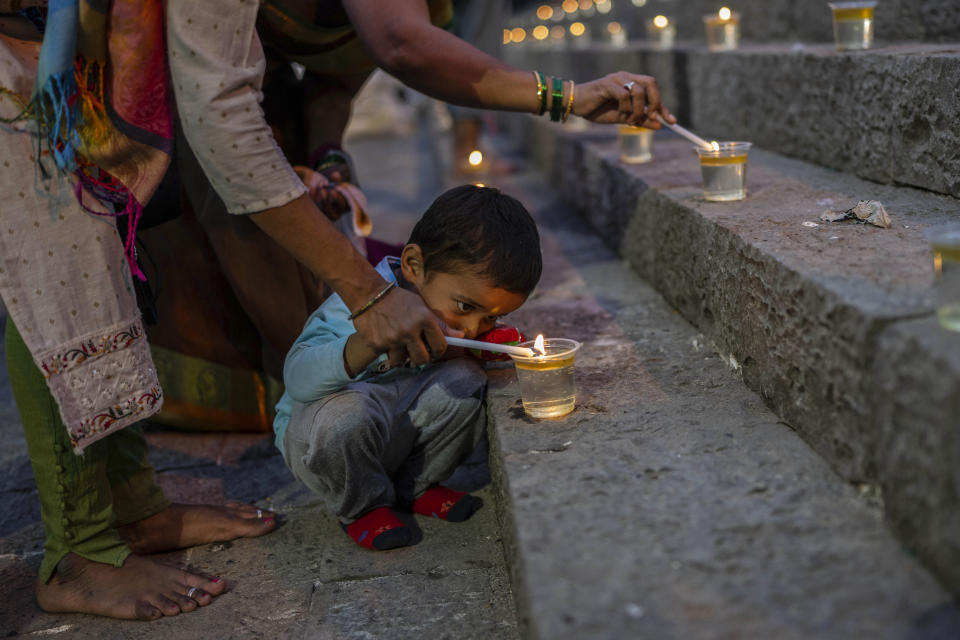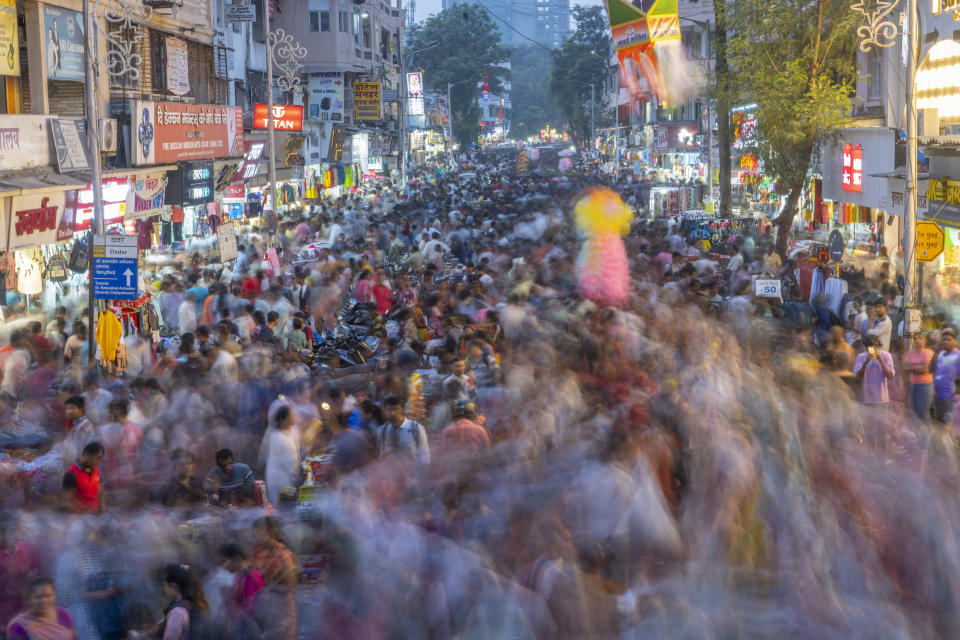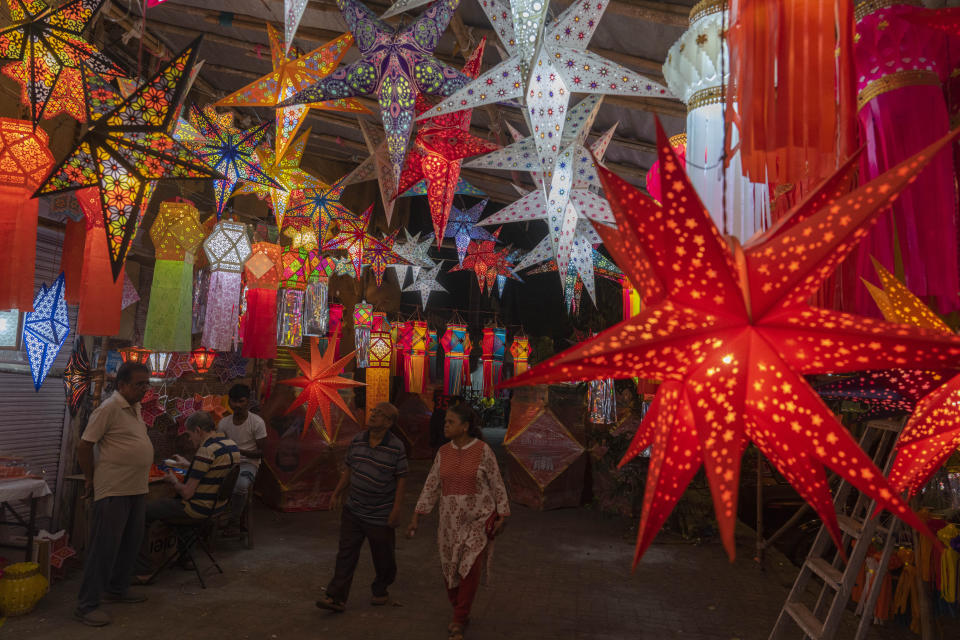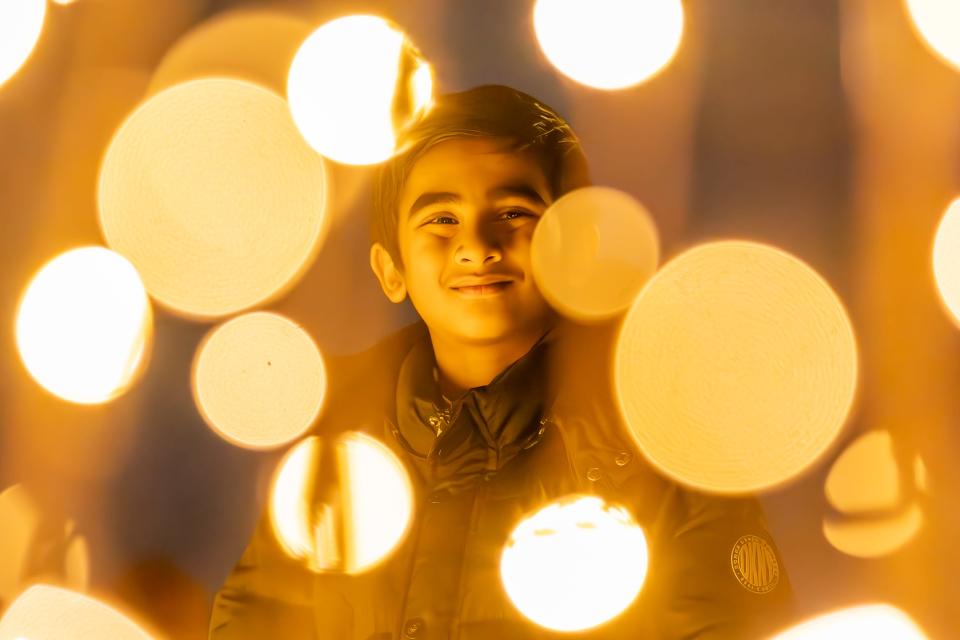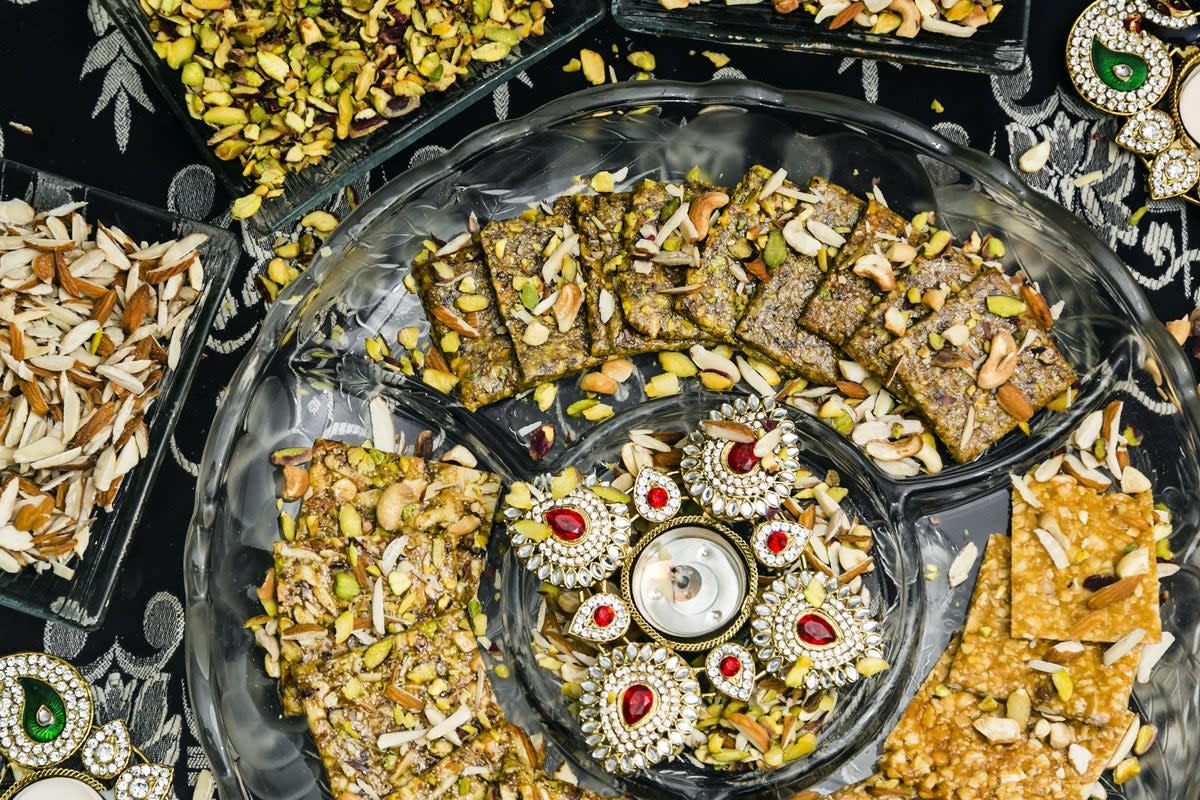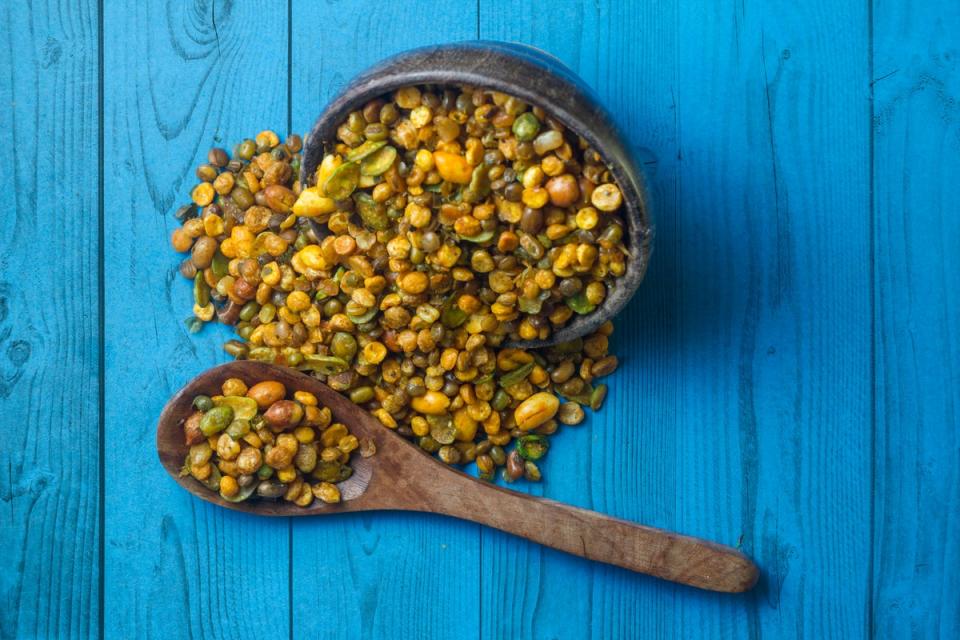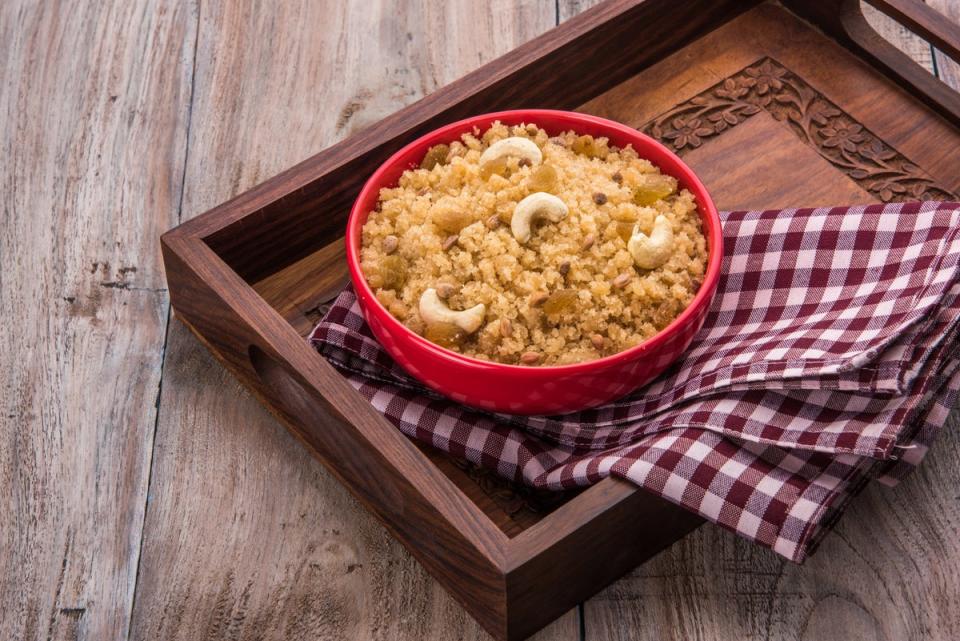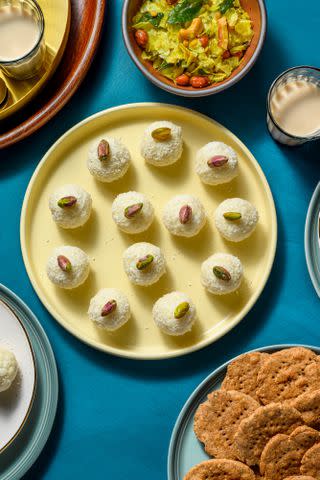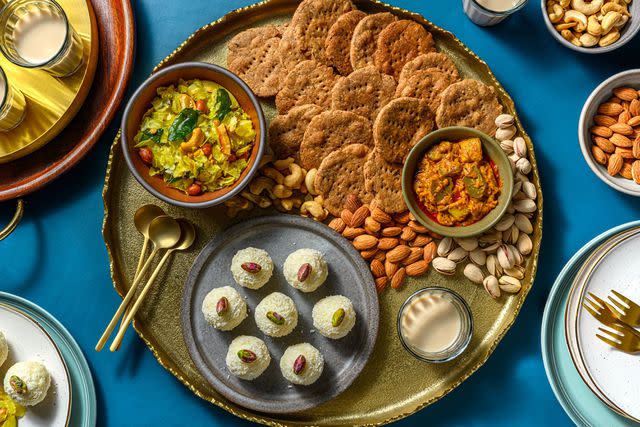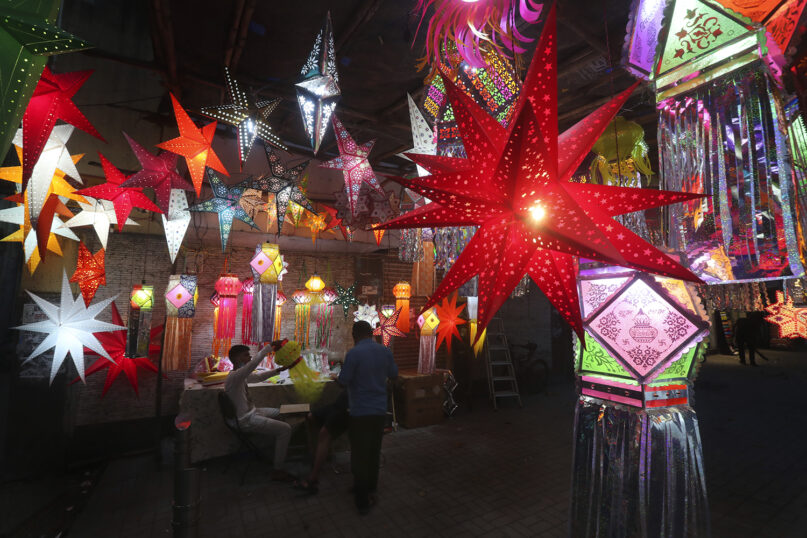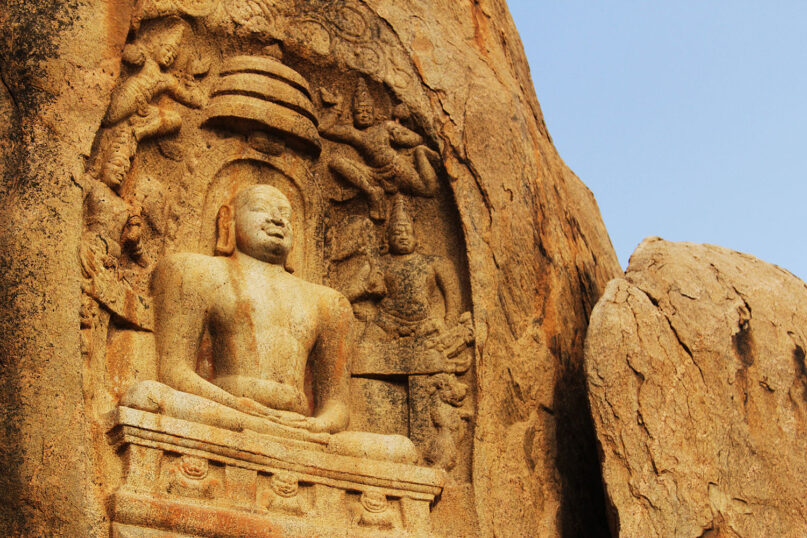Indians celebrate festival of light amid COVID-19 fears
By KRUTIKA PATHIy

1 of 11
NEW DELHI (AP) — Indians across the country began celebrating Diwali, the Hindu festival of lights, on Thursday amid concerns over the coronavirus pandemic and rising air pollution.
Diwali is typically celebrated by socializing and exchanging gifts with family and friends. Many light oil lamps or candles to symbolize a victory of light over darkness, and fireworks are set off as part of the celebrations.
Last year, celebrations in India were upended by a renewed spike in COVID-19 infections, but festivities this year seem to be back. Even though the government has asked people to avoid large gatherings, markets have been buzzing ahead of Diwali, with eager crowds buying flowers, lanterns and candles.
As dusk fell on Wednesday, over 900,000 earthen lamps were lit and kept burning for 45 minutes in the northern city of Ayodhya in Uttar Pradesh state, retaining the Guinness World Record it set last year. As part of the Diwali celebrations, the city last year lit 606,569 oil lamps.




Firecrackers light up the sky over lamps lined on the banks of the river Saryu in Ayodhya, India, Wednesday, Nov. 3, 2021. Over 900,000 earthen lamps were lit and were kept burning for 45 minutes as the north Indian city of Ayodhya retained its Guinness World Record for lighting oil lamps as part of the Diwali celebration – the Hindu festival of lights. (AP Photo/Rajesh Kumar Singh)
The lamps were lit at Ram ki Pauri, at the banks of Saryu River, a stunning spectacle for thousands of visitors who thronged its shores while ignoring coronavirus social distancing norms. A laser and fireworks show followed, illuminating the city’s lanes and river banks. Thousands of city residents also lit lamps at their houses and temples.
The festival is being celebrated at a time when India’s pandemic crisis has largely subsided.
On Thursday, the country recorded over 12,000 new coronavirus cases and 461 deaths, a far cry from earlier this year when India buckled under a few hundred thousand new infections every day. Overall, it has recorded more than 35 million infections and over 459,000 deaths, according to the Health Ministry. These figures, as elsewhere, are likely undercounts.
Even states where infections were swelling a few weeks ago, such as Kerala along the tropical Malabar Coast, have seen a sustained decline. India also celebrated administering its billionth COVID-19 vaccine dose last month, further boosting confidence that life is returning to normal.
Still, experts have warned that the festival season could bring a renewed spike in infections if COVID-19 health measures aren’t enforced.
There are also worries over air pollution, which typically shrouds northern India under a toxic grey smog at this time as temperatures dip and winter settles in.
On Diwali night, people also lit up the sky with firecrackers — their smoke causing pollution that takes days to clear.
While there is no nationwide ban on bursting firecrackers, a number of states have imposed restrictions to stem the pollution, with some allowing their residents to light green crackers for a certain number of hours. Green crackers produce lesser emissions than normal firecrackers. In the past, similar bans have often been flouted.

___
Associated Press writer Biswajeet Banerjee in Lucknow, India, contributed to this report.
In photos: Diwali marked in Asia with celebrations, prayers
Millions of people across Asia are celebrating the Hindu festival of Diwali, which symbolises new beginnings and the triumph of good over evil and light over darkness.
The festival is celebrated mainly in India, but Hindus across the world, particularly in other parts of Asia, also gather with family members and friends to socialize, visit temples and decorate houses with small oil lamps made from clay. The festival is also marked by raucous parties and fireworks displays, often throughout the night.
Like every year, India has been lit up in a dazzling display of lights and colours. Brightly coloured rangoli designs are drawn at the entrances of homes and offices, which are decked in fairy lights.
The celebrations were especially spectacular in Ayodhya city in northern Uttar Pradesh state, where over 900,000 earthen lamps were lit on the banks of the Saryu River as desk fell Wednesday. Hindus believe the city is the birthplace of the god Ram.

READ MORE:
* Diwali's 'Festival of Lights' offers a moment for reflection, faith and hope
* A taste of Diwali: Recipes to celebrate the festival of light

In eastern Ahmedabad city in Gujarat state, devotees worshipped their account books as the festival also marks the start of the new Hindu financial year.
The day was marked as Tihar, also known as Deepawali, in neighboring Nepal. There, the five-day celebrations began Tuesday and people thronged markets and shopped for marigold flowers, which hold huge cultural significance during the festival. On Wednesday, devotees celebrated dogs that are regarded as the guardian of the Hindu death god Yama.

VINCENT THIAN/AP
In Malaysia, Hindu devotees prayed at temples and lit clay oil lamps. Some climbed the coloured stairs to pray at the Batu Caves temple just north of Kuala Lumpur to pay homage to their deity, Lord Muruga.
People also celebrated with friends and families in Indonesia, Japan and Taiwan.
Diwali marks Hindu god Ram’s return to his kingdom after 14 years in exile. Hindus believe that during Diwali the goddess of wealth, Lakshmi, will visit their homes if they are illuminated and decorated.

The Diwali festival is also observed among Jains, Sikhs and Buddhists. While each religion marks the festival with different historical events and legends, they all represent the victory of good over evil.


















